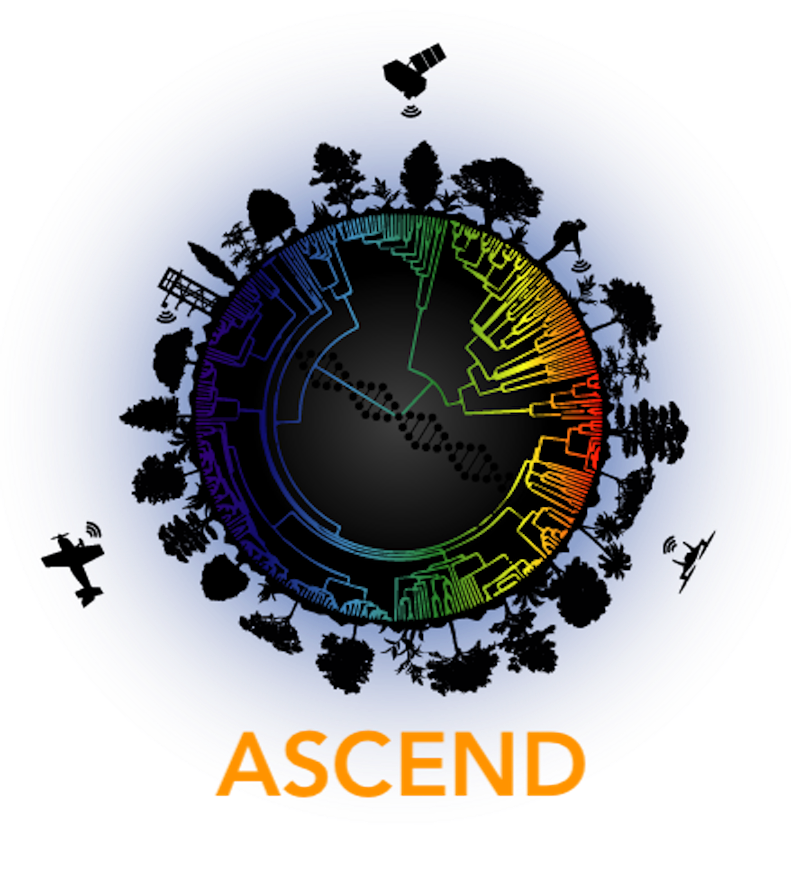NextGen: Brett Fredericksen
How would you explain your research to someone who is not a scientist?
Most cameras, like the ones attached to your phone, capture images using red, blue, and green light. Light travels from its source (like the sun or a flash on a camera), reflects off the objects in the image, and is captured through the camera’s lens by a sensor that can detect red, green and blue photons. The technology we are using can detect light in wavelengths outside of what our eyes can see! These pictures can contain orders of magnitude more information than a picture from your phone. Our research is trying to leverage this type of “hyperspectral” data to measure and learn about plants at different scales of biodiversity. We can take images at very small scales (like individual cells) and very large scales (like whole forests), giving us the potential to explain biological concepts across the scales of life.
My work specifically focuses on the smallest scale of biological diversity, differences in genes. Genes govern how living organisms respond to their environment, and there are genetic differences even between individuals of the same species. My goal is to link genetic data and hyperspectral data so that we can better monitor within-species diversity. I am using hyperspectral data to identify differences within populations and find genes of interest that are involved in plant stress and productivity.
When did you know that you wanted to become a scientist?
Growing up, I had always gravitated towards the sciences and specifically biology, but it wasn’t until my time as an undergraduate that I managed to get some real research experience in the lab. As it happens, this first lab experience was with Jeannine Cavender-Bares. At the time, I was studying biology with the goal of becoming a physician at the University of Minnesota, and I started working in the Cavender-Bares lab as a summer job. However, the work resonated with me and I ended up spending three more years with the lab. For me, it was the people that I worked with in the lab that really got me hooked and showed me what it meant to be a scientist. My supervisors and mentors at the time helped develop my scientific curiosity, and they encouraged me to find answers to my own questions regarding our research. In addition to great people, the tools and equipment that I got to use during my early lab days absolutely fascinated me! Machines that could measure rates of photosynthesis in real time! Machines that could force water out of plant tissue at specific pressures! Machines that could precisely measure wavelengths of light reflected off surfaces! To this day, I still find myself marveling at the awesome things technology can do in the lab, and it remains a core aspect of why I love being a scientist.
Brett Fredericksen at the Kellogg Biological Station in Michigan collecting samples of switchgrass to measure spectral reflectance for genome wide association studies.
Tell us about your research projects in ASCEND
Currently, I work on several different projects within ASCEND with a focus on genotype by environmental interactions and linking hyperspectral data to genetic data. The projects I am involved in include:
Coexpression networks in the Caryophyllales and in maize under stress
Hyperspectral GWAS (Genome Wide Association Studies) in switchgrass subpopulations
Physiological variation and hyperspectral detection of genotype by environmental interactions in bur oaks
These projects involve quite diverse study species and approaches for combining spectral data with genetic and genomic data. However, by leveraging existing analytical methods like gene coexpression networks and genome wide associations, we can more deeply understand the variation in hyperspectral data.
What do you find most challenging about your current research?
My current position at the University of Minnesota involves working between three different labs with different biological focuses. This results in wearing different hats based on the current group I am working with and learning the jargon of different fields. For example, while working with genomics collaborators, I may be asked to speak on the physiological aspects of a project. While speaking with my physiological collaborators, I may then need to switch to speaking on the genomics aspects of a project. It can be intimidating to work on projects outside of one’s specific area of expertise, and I often find myself humbled by the amount of new concepts I encounter. But…the point of the ASCEND Biology Integration Institute is to integrate. Learning to communicate across fields is central to this integration and a skill that I, as an early career researcher, am eager to learn.

